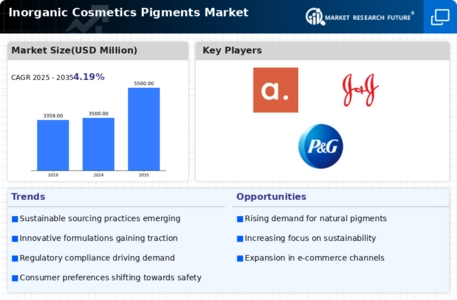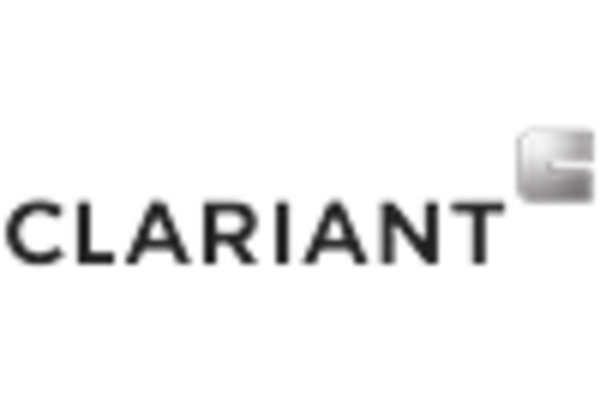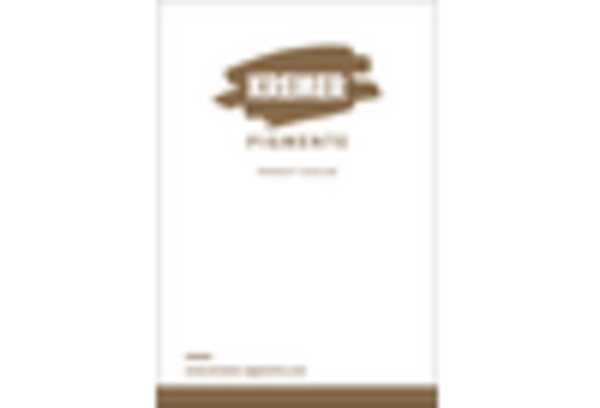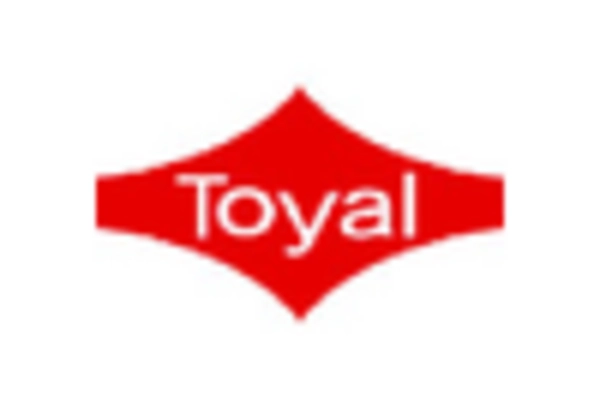Expansion of E-commerce Platforms
The rise of e-commerce platforms is reshaping the Global Inorganic Cosmetics Pigments Market Industry by providing consumers with greater access to a variety of cosmetic products. Online retailing allows brands to reach a global audience, facilitating the introduction of innovative products that feature inorganic pigments. This trend is particularly relevant as consumers increasingly prefer the convenience of online shopping. The expansion of e-commerce is expected to contribute to the market's growth trajectory, as it enables brands to showcase their offerings effectively and cater to diverse consumer needs.
Rising Demand for Natural Products
The Global Inorganic Cosmetics Pigments Market Industry experiences a notable increase in demand for natural and organic cosmetics. Consumers are increasingly seeking products that are free from synthetic chemicals, which drives manufacturers to incorporate inorganic pigments that are perceived as safer and more environmentally friendly. This trend is reflected in the market's projected growth, with an estimated value of 3500 USD Million in 2024. As awareness of ingredient safety rises, the industry is likely to adapt by enhancing product formulations, thereby expanding the market for inorganic pigments.
Regulatory Support for Safe Cosmetics
The Global Inorganic Cosmetics Pigments Market Industry benefits from increasing regulatory support aimed at ensuring the safety of cosmetic products. Governments worldwide are implementing stricter regulations regarding the use of pigments in cosmetics, which, while challenging, also encourages manufacturers to invest in high-quality inorganic pigments that comply with safety standards. This regulatory landscape not only fosters consumer trust but also drives market growth. The industry's adaptation to these regulations is likely to contribute to a compound annual growth rate of 4.19% from 2025 to 2035, reflecting a robust commitment to safety and quality.
Growing Awareness of Sustainable Practices
Sustainability is becoming a pivotal factor in the Global Inorganic Cosmetics Pigments Market Industry. As consumers become more environmentally conscious, there is a growing preference for products that utilize sustainable sourcing and production methods. Inorganic pigments, often derived from natural minerals, align with this trend, as they can be produced with lower environmental impact compared to synthetic alternatives. This shift towards sustainability is expected to drive market growth, as brands that prioritize eco-friendly practices are likely to attract a larger consumer base, further enhancing the industry's value.
Technological Advancements in Pigment Production
Innovations in the production processes of inorganic pigments are significantly influencing the Global Inorganic Cosmetics Pigments Market Industry. Advanced manufacturing techniques, such as nanotechnology and improved synthesis methods, enhance the quality and performance of pigments. These advancements not only improve color vibrancy and stability but also reduce production costs. As a result, the market is expected to grow, reaching approximately 5500 USD Million by 2035. The integration of technology in pigment production may also lead to the development of new shades and formulations, catering to diverse consumer preferences.

















Leave a Comment